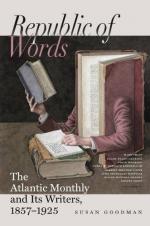In 1823, when the National Gallery of England was founded, the English were nearly as dead to art as we are now. A few amateurs alone cultivated it, but there was no general sympathy with nor knowledge of it. Yet by 1837, in donations alone, the gallery had received one hundred and thirty-seven pictures. Since that period gifts have increased tenfold in value and numbers. Connected with it, and a part of that noble, comprehensive, and munificent system of art-education which the British government has inculcated, are the British and Kensington Museums. Schools of design, with every appliance for the growth of art, have rapidly sprung into existence. Private enterprise and research have correspondingly increased. British agents, with unstinted means, are everywhere ransacking the earth in quest of everything that can add to the value and utility of their national and private collections. A keen regard for all that concerns art, a desire for its national development, an enlightened standard of criticism, and with it the most eloquent art-literature of any tongue, have all recently sprung into existence in our motherland. All honor to those generous spirits that have produced this,—and honor to the nation that so wisely expends its wealth! A noble example for America! England also throws open to the competition of the world plans for her public buildings and monuments. Mistakes and defects there have been, but an honest desire for amendment and to promote the intellectual growth of the nation now characterizes her pioneers in this cause. And what progress! Between 1823 and 1850, in the Museum alone, there have been expended $10,000,000. Within twelve years, $450,000 have been expended on the National Gallery for pictures, and yet its largest accession of treasures is by gifts and bequests. Lately, beside the Pisani Veronese bought for $70,000, eight other paintings have been purchased at a cost of $50,000. In 1858, $36,000 were given for the choice of twenty, of the early Italian schools, from the Lombardi Gallery at Florence,—not masterpieces, but simply characteristic specimens, more or less restored. The average cost of late acquisitions has been about $6,000 each. In 1858, there were 823,000 visitors to both branches of the National Gallery. Who can estimate not alone the pleasure and instruction afforded by such an institution to its million of annual visitors, but the ideas and inspiration thence born, destined to grow and fructify to the glory and good of the nation? At present there are seventy-seven schools of art in England, attended by 68,000 students. In 1859, they and kindred institutions received a public grant of nearly $450,000. The appropriation for the British Museum alone, for 1860, is L77,452.




